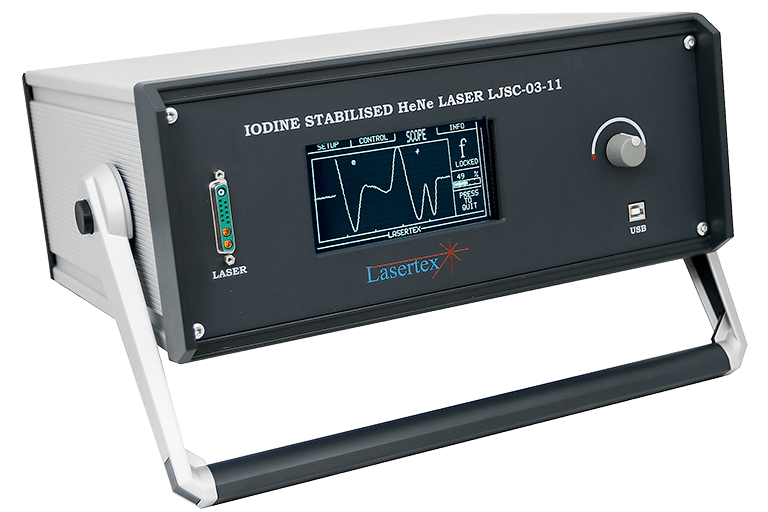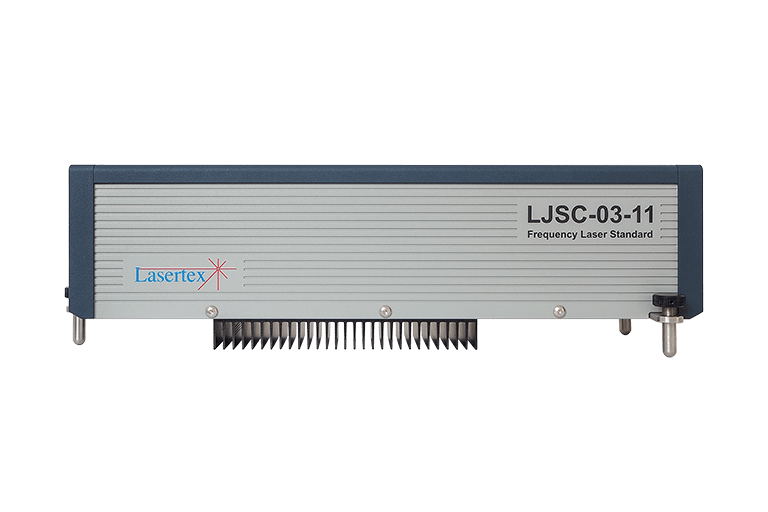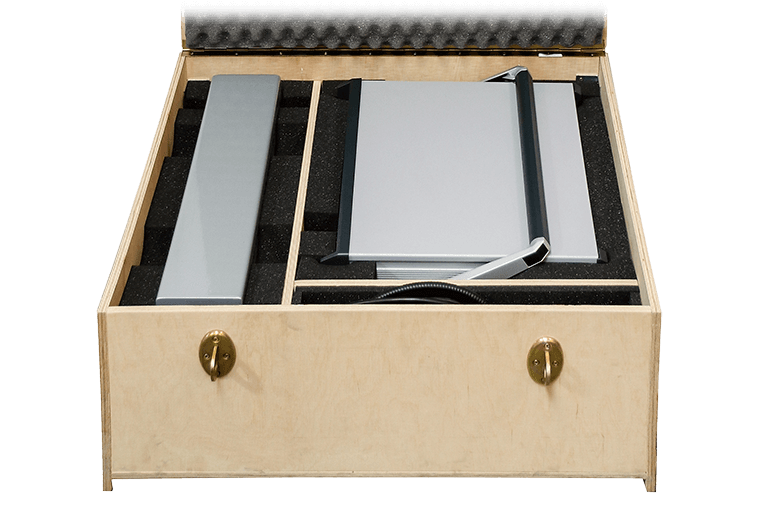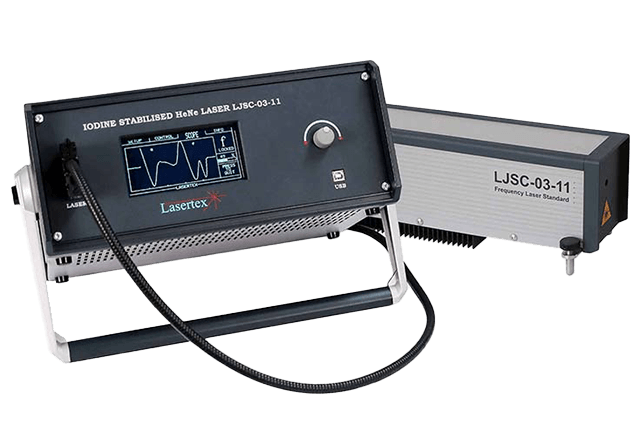Laser frequency reference for laboratory, science or metrological application
Designed for precision & stability
Frequency Laser Standard is an automatic laboratory laser frequency reference or a laser etalon designed to compare and calibrate He-Ne (632,8nm wavelength) lasers. High stability of the laser is achieved with help of reference frequencies based on the transition of atomic iodine isotope vapour. This unique laboratory device with automatic absorption peaks detection is able to output results to a build-in VFD graphic display. Rack mount version is also available.
Laser frequency reference features:
- Fully compliance with the International Committee of Weights and Measures CIPM 97 “Mise en pratique” recommendations for metrology realisation
- Frequency repeatability: 2.5 x 10 -11
- Frequency stability: 2.5 x 10 -12
- Compact construction
- Automatic tune/lock-in at 12 different iodine hyperfine components
- Primary laser reference standards for realization of the meter
- Calibration reference for stabilized lasers
Why having our laser standard in a laboratory or a service center can be an essential thing?
There are for several reasons, particularly valid ones in the context of scientific research, precision measurements or laser equipment calibration. A laser standard serves as a precise reference for testing and calibrating laser instruments in a lab. This ensures that measurements and experiments conducted using these devices are accurate, reliable and consistent. Our laser standard has a highly stable and accurate wave-length with frequency stability up to 2.5 x 10-12, which is crucial for conducting experiments and measurements. It provides a stable reference for comparing other laser sources to.
Most scientific institutions require a high level of precision. A laser standard, with its stable output and determined specification provides the necessary accuracy for tests and various research applications. Interferometry, spectroscopy or laser devices calibration are just some examples of possible LJSC-03-11 applications.
The equipment is a good choice for universities as a great tool for education and training needs. In educational settings, a laser standard can be used to teach students about precise laser equipment, laser frequency adjustment and laser beam generation as well as conduct experiments. This helps students gain hands on experience and develop a deeper understanding of the subject matter.
Consistency and reproducibility, that LJSC-03-11 standard provides, helps to ensure that the performed measurements are consistent and reproducible. This is important for scientific work, as it allows researchers to compare results and build on each other’s work.
The other application for LJSC-03-11 is quality control. In manufacturing and industry a laser standard can be used to monitor and maintain the quality of laser-based systems and equipment. This ensures that products meet the required specifications and perform as expected.
A laser standard plays a critical role in various aspects of laboratory or science work, calibration and metrology, precision measurements and to obtain consistency during quality control step. Lasertex LJSC-03-11 is an indispensable tool for researchers, engineers, and students working in the fields of laser optics and photonics.



